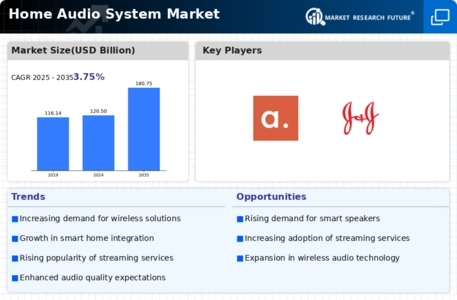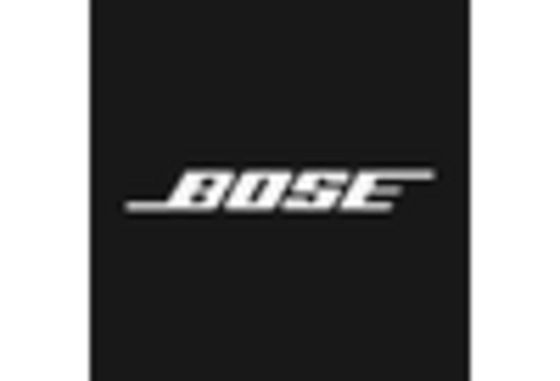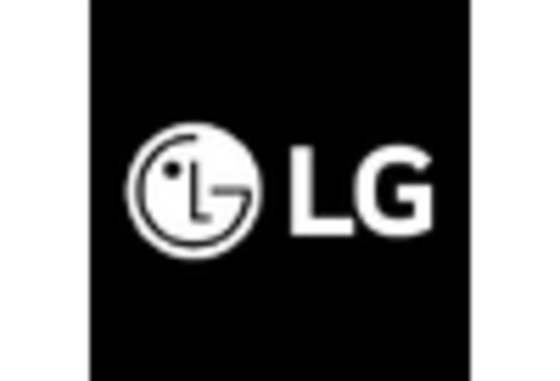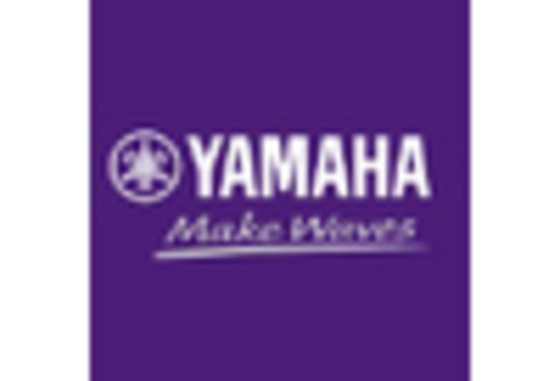Sustainability Trends
The Home Audio System Market is increasingly influenced by sustainability trends, as consumers become more environmentally conscious. There is a growing demand for eco-friendly audio products that utilize sustainable materials and energy-efficient technologies. Recent surveys indicate that a significant portion of consumers is willing to pay a premium for products that align with their values regarding sustainability. This shift is prompting manufacturers to explore greener production methods and to develop audio systems that minimize environmental impact. Additionally, the rise of second-hand markets for audio equipment reflects a broader trend towards sustainability, as consumers seek to reduce waste and extend the lifecycle of products. Consequently, the Home Audio System Market is likely to see a rise in sustainable product offerings, catering to the environmentally aware consumer.
Rising Disposable Income
An increase in disposable income across various demographics is positively influencing the Home Audio System Market. As consumers find themselves with more financial flexibility, they are more inclined to invest in premium audio systems that enhance their home entertainment experiences. Market data indicates that regions with growing middle-class populations are witnessing a notable uptick in sales of high-end audio equipment. This trend is particularly evident in emerging markets, where the demand for quality sound systems is on the rise. Additionally, the proliferation of streaming services has led consumers to seek audio systems that can deliver exceptional sound quality, further driving the market. The willingness to spend on luxury audio products suggests that the Home Audio System Market is poised for growth, as consumers prioritize audio quality and immersive experiences in their homes.
Technological Advancements
The Home Audio System Market is experiencing a surge in technological advancements, particularly with the integration of wireless technologies and smart features. Innovations such as Bluetooth, Wi-Fi connectivity, and voice control capabilities are becoming standard in modern audio systems. According to recent data, the adoption of smart speakers has increased significantly, with projections indicating that by 2025, nearly 50% of households will own at least one smart audio device. This trend suggests that consumers are increasingly seeking convenience and enhanced user experiences, driving demand for advanced home audio solutions. Furthermore, the rise of high-resolution audio formats is prompting manufacturers to develop systems that can deliver superior sound quality, thereby appealing to audiophiles and casual listeners alike. As a result, the Home Audio System Market is likely to continue evolving, with technology playing a pivotal role in shaping consumer preferences.
Consumer Preference for Customization
The Home Audio System Market is witnessing a shift towards consumer preference for customization and personalization in audio experiences. As consumers become more discerning about their audio needs, they are increasingly seeking systems that can be tailored to their specific preferences. This trend is reflected in the growing popularity of modular audio systems, which allow users to select components that best suit their listening environments. Market analysis suggests that the demand for customizable audio solutions is expected to rise, with consumers valuing the ability to create unique soundscapes in their homes. Additionally, advancements in software and app integration enable users to fine-tune their audio settings, further enhancing the personalized experience. As a result, the Home Audio System Market is likely to adapt to these evolving consumer demands, fostering innovation in product offerings.
Increased Demand for Home Entertainment
The Home Audio System Market is benefiting from a heightened demand for home entertainment solutions. As more individuals opt to create immersive entertainment environments at home, the need for high-quality audio systems has surged. Recent statistics reveal that the home entertainment sector is projected to grow at a compound annual growth rate of over 10% in the coming years. This growth is largely attributed to the rising popularity of streaming platforms, which encourage consumers to invest in superior audio systems to enhance their viewing experiences. Furthermore, the trend of hosting home gatherings and events has led to an increased interest in multi-room audio systems, allowing users to enjoy synchronized sound throughout their homes. Consequently, the Home Audio System Market is likely to see sustained growth as consumers continue to prioritize audio quality in their home entertainment setups.


















Leave a Comment